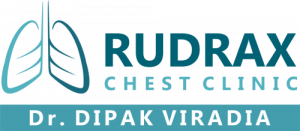
A heart attack occurs when the flow of blood to the heart is blocked. The blockage is most often a buildup of fat, cholesterol and other substances, which form a plaque in the arteries that feed the heart (coronary arteries). Sometimes, a plaque can rupture and form a clot that blocks blood flow. The interrupted blood flow can damage or destroy part of the heart muscle.
Common heart attack signs and symptoms include:
- Pressure, tightness, pain, or a squeezing or aching sensation in your chest or arms that may spread to your neck, jaw or back
- Nausea, indigestion, heartburn or abdominal pain
- Shortness of breath
- Cold sweat
- Fatigue
- Lightheadedness or sudden dizziness
Ideally, your doctor should screen you during regular physical exams for risk factors that can lead to a heart attack.
If you're in an emergency setting for symptoms of a heart attack, you'll be asked about your symptoms and have your blood pressure, pulse and temperature checked. You'll be connected to a heart monitor and have tests to see if you're having a heart attack.
Tests to diagnose a heart attack include:
- Electrocardiogram (ECG).This first test done to diagnose a heart attack records electrical signals as they travel through your heart. Sticky patches (electrodes) are attached to your chest and limbs. Signals are recorded as waves displayed on a monitor or printed on paper. Because injured heart muscle doesn't conduct electrical impulses normally, the ECG may show that a heart attack has occurred or is in progress.
- Blood tests.Certain heart proteins slowly leak into your blood after heart damage from a heart attack. Emergency room doctors will take samples of your blood to check for these proteins, or enzymes.
Additional tests
If you've had or are having a heart attack, doctors will take immediate steps to treat your condition. You might also have these additional tests.
- Chest X-ray.An X-ray image of your chest allows your doctor to check the size of your heart and its blood vessels and to look for fluid in your lungs.
- Sound waves (ultrasound) create images of the moving heart. Your doctor can use this test to see how your heart's chambers and valves are pumping blood through your heart. An echocardiogram can help identify whether an area of your heart has been damaged.
- Coronary catheterization (angiogram).A liquid dye is injected into the arteries of your heart through a long, thin tube (catheter) that's fed through an artery, usually in your leg or groin, to the arteries in your heart. The dye makes the arteries visible on X-ray, revealing areas of blockage.
- Cardiac CT or MRI.These tests create images of your heart and chest. Cardiac CT scans use X-rays. Cardiac MRI uses a magnetic field and radio waves to create images of your heart. For both tests, you lie on a table that slides inside a long tubelike machine. Each can be used to diagnose heart problems, including the extent of damage from heart attacks.
Treatment
Heart attack treatment at a hospital
Each minute after a heart attack, more heart tissue deteriorates or dies. Restoring blood flow quickly helps prevent heart damage.
Surgical and other procedures
In addition to medications, you might have one of these procedures to treat your heart attack:
- Coronary angioplasty and stenting.In this procedure, also known as percutaneous coronary intervention (PCI), doctors guide a long, thin tube (catheter) through an artery in your groin or wrist to a blocked artery in your heart. If you've had a heart attack, this procedure is often done immediately after a cardiac catheterization, a procedure used to find blockages.
The catheter has a special balloon that, once in position, is briefly inflated to open a blocked coronary artery. A metal mesh stent almost always is inserted into the artery to keep it open long term, restoring blood flow to the heart. Usually, you get a stent coated with a slow-releasing medication to help keep your artery open.
- Coronary artery bypass surgery.In some cases, doctors perform emergency bypass surgery at the time of a heart attack. If possible, however, you might have bypass surgery after your heart has had time — about three to seven days — to recover from your heart attack.
Bypass surgery involves sewing veins or arteries in place beyond a blocked or narrowed coronary artery, allowing blood flow to the heart to bypass the narrowed section.
You'll likely remain in the hospital for several days after blood flow to your heart is restored and your condition is stable.




